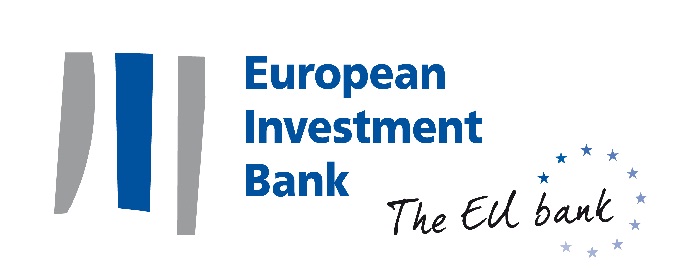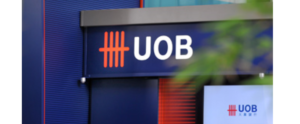EU Support for Cutting-Edge ESS Research Infrastructure in Sweden and Denmark

The European Investment Bank has signed a EUR 100 million (SEK 985 million) credit facility with the European Spallation Source (ESS) in Lund, Sweden. The loan was extended under the “InnovFin – EU Finance for Innovators” programme with the financial backing of the European Union under Horizon 2020, the EU’s research and innovation funding and support programme which also acts as a possible first loss piece. Apart from providing financing, the EIB’s InnovFin Advisory Service also provided technical assistance to advise ESS on the financial structure enabling access to external funding in support of the construction.
For the EIB, it is the first ever loan supporting the construction of a project with the statute of a European Research Infrastructure Consortium (ERIC)*, and the first time that an ERIC accesses external financing to support the construction of the research facility. On this occasion, the EIB joined forces with both the Nordic Investment Bank (NIB) and Svensk Exportkredit (SEK) who provided EUR 100 million each, for a total of EUR 300 million in financing in support of the ESS.
“Supporting a European research infrastructure which will facilitate scientific cooperation between European countries makes perfect sense for the EU Bank. Furthermore, the ESS’ unique, cutting edge research capacity creates significant and exciting new opportunities in the fields of life sciences, energy and environmental technology, which are also priority objectives of the EIB.” said Jan Vapaavuori, EIB Vice-President. “Science requires patience, as results do not come overnight, and some of the possible outcomes of the research that will be done here may not even have been thought of yet. We need to continue investing in facilities like this one to propel humanity and human knowledge forwards.”
Carlos Moedas, European Commissioner for Research, Science and Innovation, said: “The EU has been supporting ESS through grants from Horizon 2020, our research and innovation programme, and granted its legal status of European research infrastructure last year. This loan, backed by Horizon 2020, will help to push the boundaries of knowledge in a range of disciplines with concrete impact on people’s lives, from the construction of industrial motors to developing proteins for medical applications.”
“This financing agreement is very important, because it will help us maintain an aggressive schedule and deliver this high priority science project on time,” says John Womersley, ESS Director General “Any delays would have big cost implications, and so the EIB financing helps us to deliver world leading science with the best value for European taxpayers’ money.”
The ESS neutron source for materials science is a key element in European efforts to further develop its world-leading large-scale research infrastructures suite. With the facility’s unprecedented source performance, Europe will retain the world lead in research activities encompassing the broad areas of science that require neutron scattering methods. The EIB investment comes at a crucial time in the construction phase of the Spallation Source. Through its loan to ESS the EIB supports European research offering capabilities that are not achievable with the levels of brightness of the current facilities.
In nuclear physics, spallation is the process in which a heavy nucleus emits a large number of nucleons as a result of being hit by a high-energy particle, thus greatly reducing its atomic weight. Endowed with the world’s most powerful neutron source, reaching intensities up to 100 times higher than existing facilities, ESS can be compared to a large “microscope”, as neutron scattering techniques offer the possibility to monitor material structures and motions at a molecular level. It thus opens new opportunities for researchers in multiple disciplines such as life science, environment, energy, transport and engineering, as well as physics, chemistry and even archaeology.
Background information:
The European Investment Bank (EIB) is the long-term lending institution of the European Union owned by its Member States. It makes long-term finance available for sound investment in order to contribute towards EU policy goals. The EU Bank has also supported the ESS through its Advisory services and has in the past supported other large research projects like CERN in Geneva.
InnovFin Large Projects is part of “InnovFin – EU Finance for Innovators”, the new generation of EU financial instruments and advisory services that was developed under Horizon 2020 to help innovative firms access finance more easily. It will help inject up to €48 billion in investments in Research and Innovation across Europe. InnovFin Large Projects aims to improve access to risk finance for R&I projects emanating from larger firms; universities and public research organisations; R&I infrastructures (including innovation-enabling infrastructures); public-private partnerships; and special-purpose vehicles or projects (including those promoting first-of-a-kind, commercial-scale industrial demonstration projects). Loans and guarantees from EUR 25m to EUR 300m are delivered directly by the EIB.
About Horizon 2020
On 1 January 2014, the European Union launched a new research and innovation funding and support programme called Horizon 2020. Over seven years, about €77 billion is invested in research and innovation projects to support Europe’s economic competitiveness and extend the frontiers of human knowledge. The EU research and innovation budget is focused mainly on improving everyday life in areas like health, the environment, transport, food and energy. Research and innovation partnerships with the pharmaceutical, aerospace, car and electronics industries also encourage private-sector investment in support of future growth and high-skilled job creation.
The ESS was included in the 2006 Roadmap of the European Strategy Forum on Research Infrastructures (ESFRI) and has been included as an ‘ESFRI Landmark’ in the 2016 update of the Roadmap. EU grants awarded under the 6th and 7th Framework Programme for Technological Development and under Horizon 2020 have supported the creation of the European Spallation Source already since its beginnings. In August 2015, The European Commission granted the legal status of European Research Infrastructure Consortium (ERIC) to the ESS. Thanks to this status granted under the community legal framework, the joint establishment and operation of this research infrastructure of European interest is significantly facilitated.
The European Spallation Source (ESS) is a multi-disciplinary research centre based on the world’s most powerful neutron source. ESS will give scientists new possibilities in a broad range of research, from life science to engineering materials, from heritage conservation to magnetism. ESS is a pan-European project, with Sweden and Denmark serving as host countries. The main research facility is being built in Lund, Sweden, and the Data Management and Software Centre (DMSC) is located in Copenhagen, Denmark. ESS is expected to deliver its first neutrons by the end of the decade, with the user program to follow in 2023. It is anticipated that 2.000-3.000 guest researchers from universities, institutes and industry will participate in the ESS user program each year, making use of the facility’s broad range of neutron instruments to answer their scientific questions.
* The Community legal framework for a European Research Infrastructure Consortium (ERIC) is designed to facilitate the joint establishment and operation of research infrastructures of European interest.














